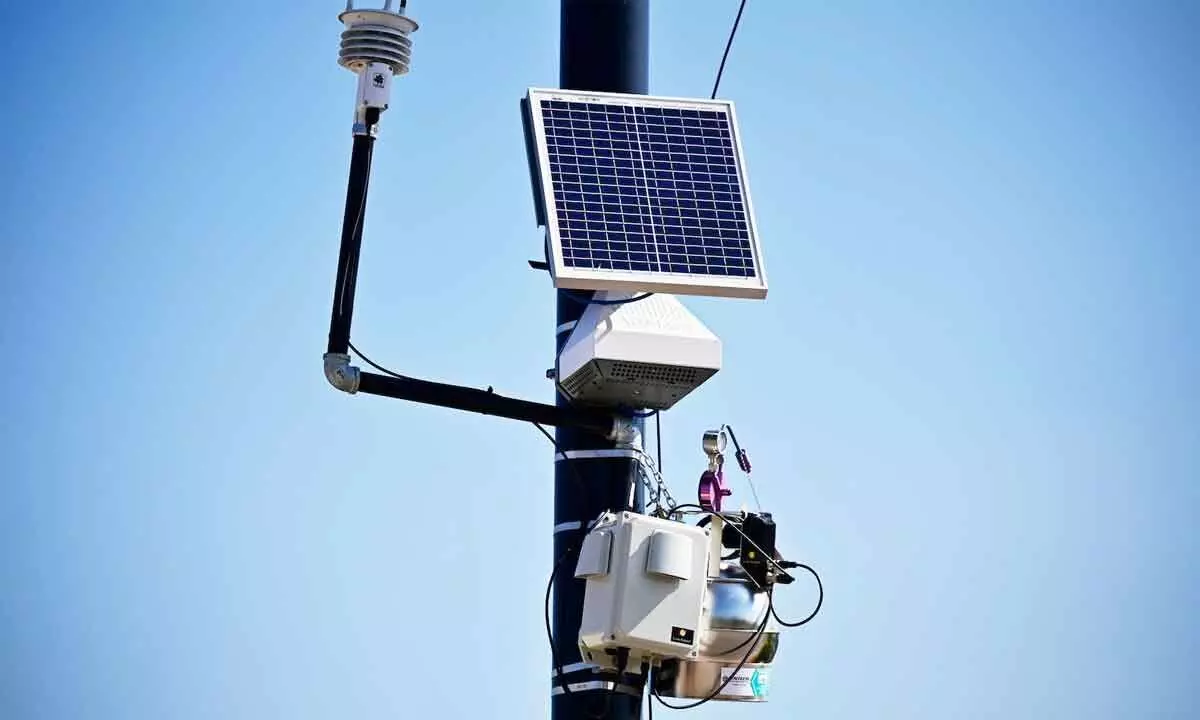Live
- Stage set for children’s science exhibition
- ‘Generation Green’ initiative to drive e-waste awareness
- Mysore royal family to get Rs 3,000 crore compensation for Palace Grounds
- Suspend officers who caned Panchamasali protesters: Bommai
- Unique move by student reaches over 1,500 in 8 countries
- Thudi takes up key issues with Uttam
- IRCTC to run ‘Maha Kumbh Punya Kshetra Yatra’
- BRS leader denies earthquake’s effect on Medigadda project
- 13th edition of ‘Hack AP Hackathon’ conducted
- Ayyappa devotees in thousands throng Yadagirigutta for Giri Pradakshina
Just In
Low-cost air sensors can improve pollution forecasting: Research


What can be done to improve the predictive power of identifying hazardous air quality in pollution hotspots?
New Delhi: What can be done to improve the predictive power of identifying hazardous air quality in pollution hotspots? A recent study from Delhi has found an answer. The study uses a high-precision spatiotemporal prediction model drawn from two years of data from a low-cost monitoring network of 28 custom-designed low-cost portable air quality sensors to derive fine-grained pollution maps.
It proposes that a network of inexpensive, portable air quality monitors in densely populated cities can significantly enhance pollution forecasting and play an important role in developing precise policy recommendations and public health alerts.
The paper emphasizes how high costs often prevent city governments from widely deploying reference-grade air quality monitors, which are the standard for providing data to the public air-quality index. For instance, only 33 reference-grade monitors are available for Delhi, which has a population of 15 million citizens and a land area of 1,500 sq.km. Researchers at Inclusion Economics at Yale University, Warwick, EPIC, Swiss Data Center, Kai Air Monitoring Pvt Ltd, and New York University proposes a new methodology to model and predict urban air quality at a fine-grained level using dense and noisy, low-cost sensors. Anant Sudarshan, Senior Fellow, EPIC, and Assistant Professor, University of Warwick, explains: "Our paper develops a model that can offer more precise forecasts and assessments of air quality.
So we used machine-learning methods to combine high and low-quality sensors and generate accurate, fine-grained pollution maps." Lashminarayan Subramanian, Professor of Computer Science at New York University, added: "Our data consists of PM2.5 concentration data from 28 low-cost sensors and the 32 government monitors, a total of 60 monitors, collected over 24 months between 2018 and 2020. "Using new machine-learning methods, we show how it is possible to develop fine-grained pollution sensing maps at low costs, a technique that could catalyse the deployment of such monitoring networks in other polluted cities, where existing data is very poor." In an additional finding, the study noted that for the 60 sensors, Delhi had exceeded WHO's PM2.5 air quality standards for 371 out of the 641 days on a daily level across two years of monitoring.
Regarding how the finding may contribute to policymaking, Rohini Pande, Director at Yale's Economic Growth Center and co-author of the study, said, aceThese accurate fine-grained pollution sensing maps provide a way forward to build citizen-driven low-cost monitoring systems that detect hazardous urban air quality at fine-grained granularities.
"With an almost exact prediction of hazardous air quality originating from such censors, we hope it will enable citizen-driven sensing where pollution sensor readings can be crowdsourced, and effective policy interventions like clean energy policies can be operationalised.
"Because we find that the improvement in predictive power is achieved in specific pollution hotspots like bus stations, markets, etc., and can provide transparency of the overall average pollution of the city, all of it contribute towards increasing the co-benefits of clean energy policies," Pande added.
Researchers suggest that such an accurate, fine-grained pollution sensing map is usable by policymakers in deciding which city neighborhoods need interventions to improve air quality and population health.

© 2024 Hyderabad Media House Limited/The Hans India. All rights reserved. Powered by hocalwire.com






